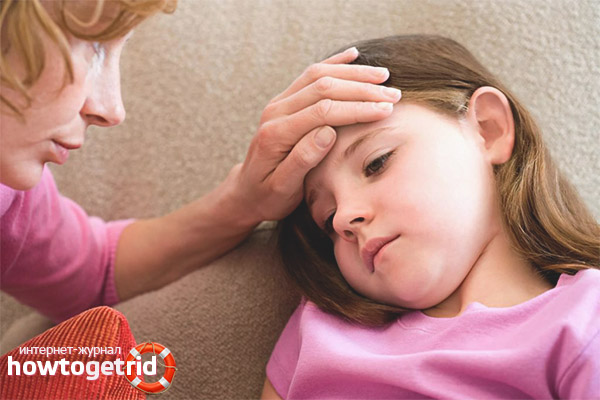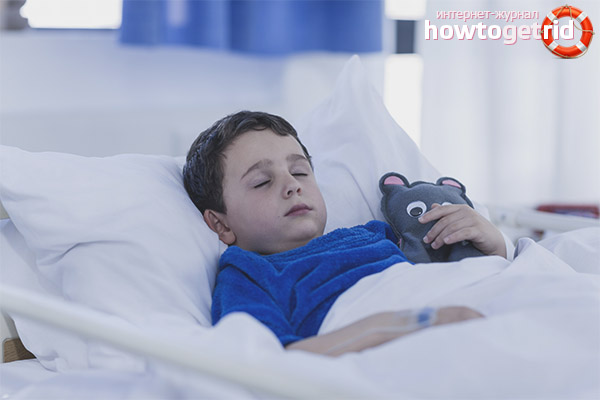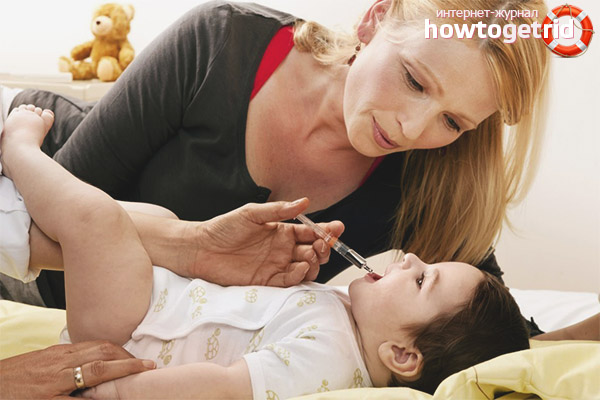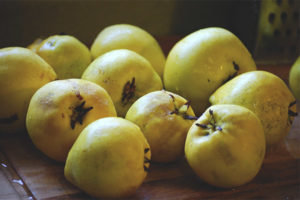The content of the article
- 1 Features of rotavirus in a child: a clinical picture
- 2 How is the infectious disease
- 3 The duration of the incubation period
- 4 How long can an infectious disease last?
- 5 Diet with an infection in a child
- 6 What products should not be given to children during infection
- 7 What products can children with the virus
- 8 When is a patient no longer infectious?
- 9 How is viral disease transmitted?
- 10 Where can I get an infection?
- 11 How dangerous is this disease?
- 12 How can a virus be distinguished from ordinary poisoning?
- 13 How to diagnose rotavirus infection
- 14 How to treat rotavirus infection
- 15 Is it necessary to beat down the temperature during viral infection
- 16 Complicated course of the disease
- 17 Video: how to treat rotavirus infection in children
Among all the varieties of viral diseases that can cause diarrhea in children and adults, rotavirus infection is most known in modern medicine. In virology, this infection is known by many names.Experts often call it intestinal or gastric flu, rotavirus enteritis. This virus most often occurs in the fall or winter, when a person’s immunity begins to weaken. Quite often, the disease begins to develop as a normal ARVI. Then the patient manifests indigestion and diarrhea.
Rotavirus infection enters the human small intestine, after which rotavirus enteritis begins to develop in the body. The peak of the development of this disease falls on the autumn-winter season and is usually divided into two periods. In the first stage of infection in the body of a sick child, symptoms appear that resemble an acute respiratory viral infection. In the second stage, the patient has diarrhea. Quite often, rotavirus can cause vomiting and fever. A thermometer can rise to the 38 or 39 mark. An intestinal disorder during a viral infection is usually accompanied by diarrhea from 4 to 15 times a day. With a strong infectious disease and complications, the patient may experience an imbalance and, as a result, dehydration. Most often, the symptoms of water scarcity occur in young patients.
Features of rotavirus in a child: a clinical picture
In young patients, after the incubation period is over, virologists observe an acute clinical manifestation of the disease. On the first day, the thermometer usually shows high temperature, the child becomes sick, vomiting and liquid stool appears. Fluid stool with rotavirus infection has some peculiarities. As inflammation occurs in the body, the baby’s feces turn yellow with a gray tint and have a clay mass. The child has nasal congestion, inflammatory processes and sore throat occur in the mouth. Sometimes the symptoms are accompanied by a cough. The baby may feel sluggish, often capricious and refuse to eat.
In children, quite often after eating, symptoms such as nausea or vomiting may occur. Such an organism's response to an infection can occur even if the baby does not eat anything at all.
In the first case, after vomiting in the mass, one can see undigested food, but mucus appears when the stomach is hungry. The baby's temperature rises and stays at the same level until the young patient is fully cured.If the crumb still does not know how to speak and is unable to explain his feelings, caring parents are obliged to follow the reaction of the baby. It is important to pay attention to the crying, restless behavior of the baby, pathogenic distention of the abdomen, rumbling in the stomach, the sleepy state of the child. Also, the baby can lose much weight during the period of illness.
After the disease begins to fade into the background, after each trip to the toilet, crumbs may remain liquid stool. Due to the fact that the symptoms of rotavirus infection can often not be distinguished from food poisoning or can be confused with salmonellosis and cholera, it is not always possible to give an accurate assessment of the eating disorder and diarrhea in a child. After the appearance of the first characteristic symptoms of the disease, parents need to seek medical help, call a doctor at home. Before the arrival of the ambulance, the baby should not be given antispasmodics and painkillers, in order not to harm the cynical picture of the disease and not to impede the establishment of the correct diagnosis.
How is the infectious disease
Any indigestion accompanied by diarrhea necessarily needs specialized treatment. The most common treatment in this case is the use of rehydration therapy. The use of a modern medical drug for Imodium diarrhea can quickly help patients and children over the age of six years to quickly overcome the negative effects of intestinal infections. It helps to normalize peristaltic contractions, slow down the progress of intestinal feces. The drug improves the absorption of water and electrolyte into the patient, and also increases the tone of the sphincter of the anus. Due to the positive effects of the drug, the signs of an intestinal infection can fade or quickly pass within one hour.
The duration of the incubation period
The duration of the course of the disease usually depends on how strong or weak the immune system is in the sick child. This period is usually called incubation. No less important in this case is the number of viral particles that enter the body of a small patient. On average, the course of the disease can last from 3 to 5 days. During this period, rotaviruses multiply and accumulate in patients.
How long can an infectious disease last?

Typically, the disease can occur in a child for a week, in some patients, this period is longer and lasts about 10-12 days. After the disease subsides and the patient feels a complete recovery, his immunity is strengthened, so the child will no longer be able to get the virus again. The body produces some specific lifelong immunity from rotavirus. An exception can only be patients with a very weak immune system.
Diet with an infection in a child
After the onset of viral disease in a child, parents should pay special attention to a balanced diet.In addition, the meal should be fractional. The composition of the baby food during a viral infection may be prescribed by the attending physician. Usually, he prescribes young patients to adhere to some of the individual components of the child's diet during the period of illness. Food should be given to a small crumb in small portions, it is necessary to maintain the interval between feeding. Very often in children during the period of the disease the appetite is lost. If a baby has symptoms of a viral infection and diarrhea is observed, then patients do not want to eat. However, parents should not force the baby to eat food. In this case, it is important to restore the water balance of the child, so children are offered to drink low-fat chicken broth, give not very strong tea without sugar, brew rosehip or boil kissel.
What products should not be given to children during infection
During the period of illness, parents should not give babies to eat dairy products. Such products with milk are considered favorable environment for the spread of the virus. Also, do not add sweet dishes to the menu of a sick child; for the time being, you should abandon fruits and vegetables, fat soups,do not give canned food, juice with concentrates, flour products, do not advise baking and Borodino bread.
What products can children with the virus
If the child feels more healthy, then the baby is better to go on a special diet, which includes rice cereal or semolina. Cereals need to be boiled in water or vegetable broth. Young patients are given to eat mashed boiled carrots, make an omelette on a pair, give apples, baked to the oven, and freshly mashed cottage cheese. Also in the diet, you can enter low-fat meatballs from fish and meat. In general, when having rotavirus, parents should strictly restrict children from eating fats, fried foods and eating large amounts of carbohydrates.
When is a patient no longer infectious?
A patient who has caught an intestinal virus is considered to be a carrier of infection, starting from the period of its infection until the complete disappearance of the virus in the body. Throughout the course of the disease, the patient releases viruses that are capable of being transmitted to other carriers.
How is viral disease transmitted?
The main mode of transmission is the fecal-oral route.Most often, the virus enters the human body due to contaminated products, as well as unboiled raw water. This infection is able to tolerate low temperatures and even for a long time can keep its livelihoods in the refrigerator.
In addition, patients can become infected by transmission through the air. The virus is transmitted from person to person. Just like the symptoms of ordinary flu, intestinal infection is accompanied by lesions and inflammation of the airways. When a patient infected with a virus sneezes or coughs, small drops of mucus disperse through the air and spread the infection next to other people.
Where can I get an infection?
You can get infection from rotavirus anywhere. Quite often, the disease can be infected in large places where many people gather. The spread of the virus can manifest itself in a single case and even grow into a massive epidemic disease. Most often it happens cold season.
How dangerous is this disease?

The characteristic features of rotavirus may differ by non-specific signs.Patients have a weakening of the body, a headache, weakness in the body, often nausea and vomiting, the temperature rises to 38-39. The respiratory symptoms of the disease include the appearance of a runny nose and cough, the throat becomes inflamed and turns red. Getting into the intestines and stomach, the infection quickly begins to be absorbed in the body, multiplies and affects the mucous membrane of the small intestine of the patient. As a result, the infection has a negative effect on the patient’s entire digestive system. Disrupted physiological processes in the digestion of food, which can lead to inflammation of the intestinal wall. The infection becomes a consequence of acute poisoning of the body, causes a feeling of nausea and patients, vomits and often provokes diarrhea.
How can a virus be distinguished from ordinary poisoning?
Symptoms of conventional poisoning are different from rotavirus infections in that they occur unexpectedly. Rotavirus is considered a seasonal disease and, in addition to digestive disorders, can cause fever and respiratory symptoms in the body. Also characteristic features of the disease are grayish and yellowish clay evacuations, dark urine, often with patches of blood.
How to diagnose rotavirus infection
During the diagnosis of the disease, specialists take into account both the characteristic clinical signs of the disease and the epidemic background. The time of the year and the mass of the disease are taken into account. There is an informative method that experts use to confirm the disease. This is an analysis for the presence of rotavirus, which is detected in the feces using electron microscopy. It is also possible to diagnose a virus at home, for this purpose even a rotavirus test was created in the medical laboratory. This test is sold in modern pharmacies and in just some ten minutes is able to find the causative agent of a viral infection in the baby’s feces. However, it is important not to leave the problem only within the walls of the house, not to self-medicate and be sure to contact a specialist for medical help.
How to treat rotavirus infection
Experts say in one voice that today there are no special methods for the treatment of rotavirus. As a rule, doctors use a symptomatic method of treating an infection, which is aimed at restoring the water and salt balance in patients.Thanks to this therapy, patients stop vomiting and diarrhea, the dehydrated body receives the necessary water. Also, doctors prescribe special medications, the so-called rehydrants. In severe cases of the disease, physicians may prescribe intravenous rehydration. For younger patients older than six years old, doctors may prescribe Imodium to eliminate loose stools and intestinal problems in children.
It is not recommended to take antibiotics for such a disease, since this type of medicine is often prescribed to cure diseases of a bacterial nature. In the case of uncontrolled intake of antimicrobial drugs or self-treatment, patients may experience problems with intestinal dysbiosis.
To prevent infection, doctors often prescribe virus vaccination to patients. Vaccination is a special vaccine against rotavirus, which contains a relaxed strain of intestinal flu. The vaccine is a colorless liquid, thanks to her, patients develop resistance to rotavirus.
Is it necessary to beat down the temperature during viral infection
Complicated course of the disease
Most often, this infectious disease passes without complications for the patient. It is important to ensure that during the illness the body does not lose much water. Parents should observe the children so that the mark on the thermometer does not rise above 39 degrees. This can cause cell damage and dehydration. Although with this virus, the body temperature rarely rises above the mark of 39 degrees.
If the parents do not seek medical help on time, but treat the infection with a liquid stool on their own, this can be a consequence of dehydration of the child’s body. In the most acute cases, even the abundant use of water does not help to overcome dehydration, so doctors prescribe the administration of intravenous fluids under the supervision of medical professionals.
Video: how to treat rotavirus infection in children












To send